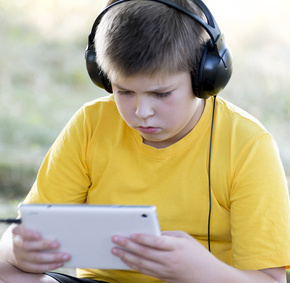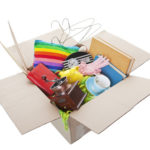 Everybody needs reminders sometimes. Children and teens with ADHD seem to need more reminders than other youngsters and often feel like they are being nagged. Technology, although a frequent source of distraction, can be extremely helpful in providing kids with ADHD the cues they need and reduce the “nagging” factor. Parents and educators can use cell phones, iPads to help kids improve their organization, reduce forgetfulness and learn to be more independent. If someone has a phone or an iPad, then they have an aide that they carry around constantly. I rarely come across a teen who doesn’t know where the phone is at all times. A child with an iPad is equally attached to his/her electronic device. Use the phone or iPad as the reminder machine so you don’t have to do this. Set alarms for chores, homework times, work breaks, appointments and even turning in assignments. Pick ONE and only one task that your teen or child forgets to do and set the alarm for that event. Watch them set it up so that the alarm has a label related to the task. Make sure all adults who interact with the youngster throughout the day understand the reminder program that you are starting. This alarm will then cue the teen to do the expected task. When you have success with this one thing, then you can add in another, but NO MORE than three per day. By having the technology do the cuing, then you are teaching self-reliance and building self-esteem simultaneously. You will support changes in behaviors without running them.
Everybody needs reminders sometimes. Children and teens with ADHD seem to need more reminders than other youngsters and often feel like they are being nagged. Technology, although a frequent source of distraction, can be extremely helpful in providing kids with ADHD the cues they need and reduce the “nagging” factor. Parents and educators can use cell phones, iPads to help kids improve their organization, reduce forgetfulness and learn to be more independent. If someone has a phone or an iPad, then they have an aide that they carry around constantly. I rarely come across a teen who doesn’t know where the phone is at all times. A child with an iPad is equally attached to his/her electronic device. Use the phone or iPad as the reminder machine so you don’t have to do this. Set alarms for chores, homework times, work breaks, appointments and even turning in assignments. Pick ONE and only one task that your teen or child forgets to do and set the alarm for that event. Watch them set it up so that the alarm has a label related to the task. Make sure all adults who interact with the youngster throughout the day understand the reminder program that you are starting. This alarm will then cue the teen to do the expected task. When you have success with this one thing, then you can add in another, but NO MORE than three per day. By having the technology do the cuing, then you are teaching self-reliance and building self-esteem simultaneously. You will support changes in behaviors without running them.
 As the trees and flowers begin to bloom, many parents take a look around their homes and long to clean out the family nest. Sometimes, the task seems just too overwhelming and you don’t get any further than a big sigh. At other times, you start with the best intentions but can’t get past the battles about what to keep and what to get rid of. Here are some simple steps that you can use to organize the belongings of your children or teens this spring (and maybe even your own)! The path to organizing success involves the 3 P’s: patience, perseverance and practice. It requires a sense of humor and the ability to keep focused on your goal. Improve collaboration with your son or daughter and avoid power struggles by using the following steps:
As the trees and flowers begin to bloom, many parents take a look around their homes and long to clean out the family nest. Sometimes, the task seems just too overwhelming and you don’t get any further than a big sigh. At other times, you start with the best intentions but can’t get past the battles about what to keep and what to get rid of. Here are some simple steps that you can use to organize the belongings of your children or teens this spring (and maybe even your own)! The path to organizing success involves the 3 P’s: patience, perseverance and practice. It requires a sense of humor and the ability to keep focused on your goal. Improve collaboration with your son or daughter and avoid power struggles by using the following steps:  1. Choose your target carefully. Make it manageable and give it a specific period of time. For example, go for cleaning out JUST the closet and give yourself a limit of around an hour. Or, concentrate on picking things off the floor and do the closet on a different day. Keep track of the time so you don’t run out! 2. Engage your child or teen in the process, using incentives. This means offering your child or teen something s/he may want to do as a reward for working with you on this project. Examples may include extra screen time (tv or computer or gaming systems), fun activity (biking, board games, playing sports), time with friends or a special food treat. 3. Get 4 bags and label each one: “keep”, “trash”, “give away”, “unsure”. Divide the STUFF into these bags. If your child or teen has trouble with letting go of belongings, help him or her make choices by talking about what is really being used and how someone else might want what your son or daughter does not. When you have your 4 bags, go through the “unsure” bag carefully one more time, putting its contents in the other 3 bags. Then put away the “keep” items immediately and deal with the “trash” and “give away” bags. Remember it is critical to value what you have done together. Look at your accomplishment and congratulate yourselves on the success of your efforts!!
1. Choose your target carefully. Make it manageable and give it a specific period of time. For example, go for cleaning out JUST the closet and give yourself a limit of around an hour. Or, concentrate on picking things off the floor and do the closet on a different day. Keep track of the time so you don’t run out! 2. Engage your child or teen in the process, using incentives. This means offering your child or teen something s/he may want to do as a reward for working with you on this project. Examples may include extra screen time (tv or computer or gaming systems), fun activity (biking, board games, playing sports), time with friends or a special food treat. 3. Get 4 bags and label each one: “keep”, “trash”, “give away”, “unsure”. Divide the STUFF into these bags. If your child or teen has trouble with letting go of belongings, help him or her make choices by talking about what is really being used and how someone else might want what your son or daughter does not. When you have your 4 bags, go through the “unsure” bag carefully one more time, putting its contents in the other 3 bags. Then put away the “keep” items immediately and deal with the “trash” and “give away” bags. Remember it is critical to value what you have done together. Look at your accomplishment and congratulate yourselves on the success of your efforts!!

